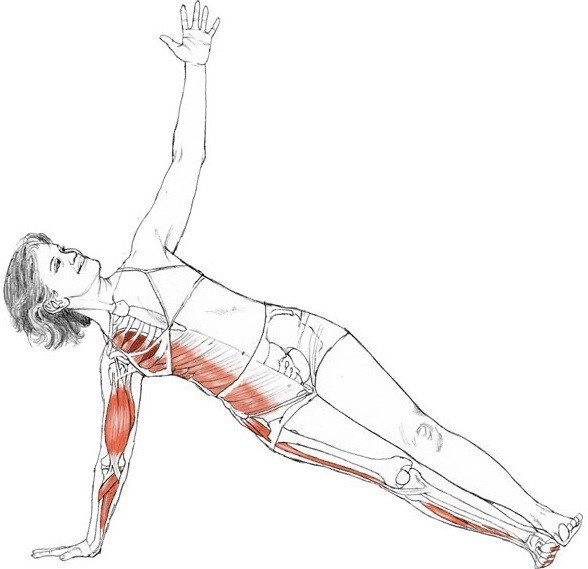Vasisthasana

Notes
The challenge of this pose is not one of flexibility, but instead how to maintain the neutral alignment of the spine and legs and the simple positions of the arms against the action of gravity. The asymmetrical relationship to gravity means that muscles have to work asymmetrically to create a symmetrical alignment of the body—essentially tadasana turned on its side.
There are many ways that gravity pulls the body out of tadasana in this pose: The spine may twist, the hips may fall forward or the shoulders may fall back (or vice versa), the bottom scapula and bottom leg may both adduct, or the pelvis may fall to the floor. It’s easy to overcompensate by lifting the hips too high or to create lateral flexion of the spine in either direction by either giving in to gravity or overresisting it. Side plank pose is simple, but not easy.
Images from the book Yoga Anatomy by Leslie Kaminoff & Amy Matthews displayed on this website are used under license.

Love Learning with Leslie?
Study with him personally online, from anywhere in the world.
Which course is right for me?
